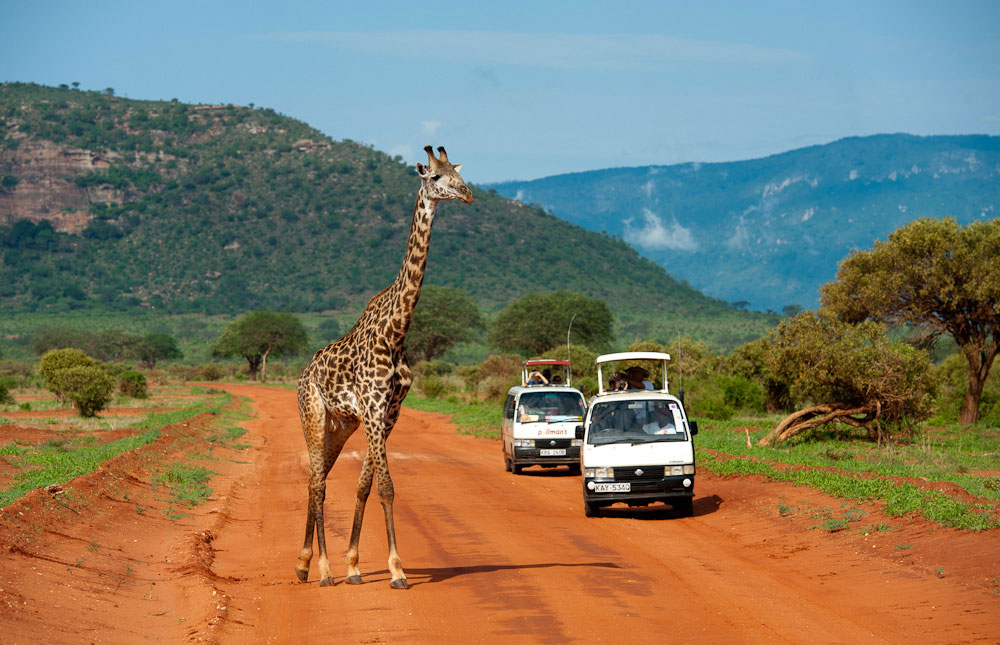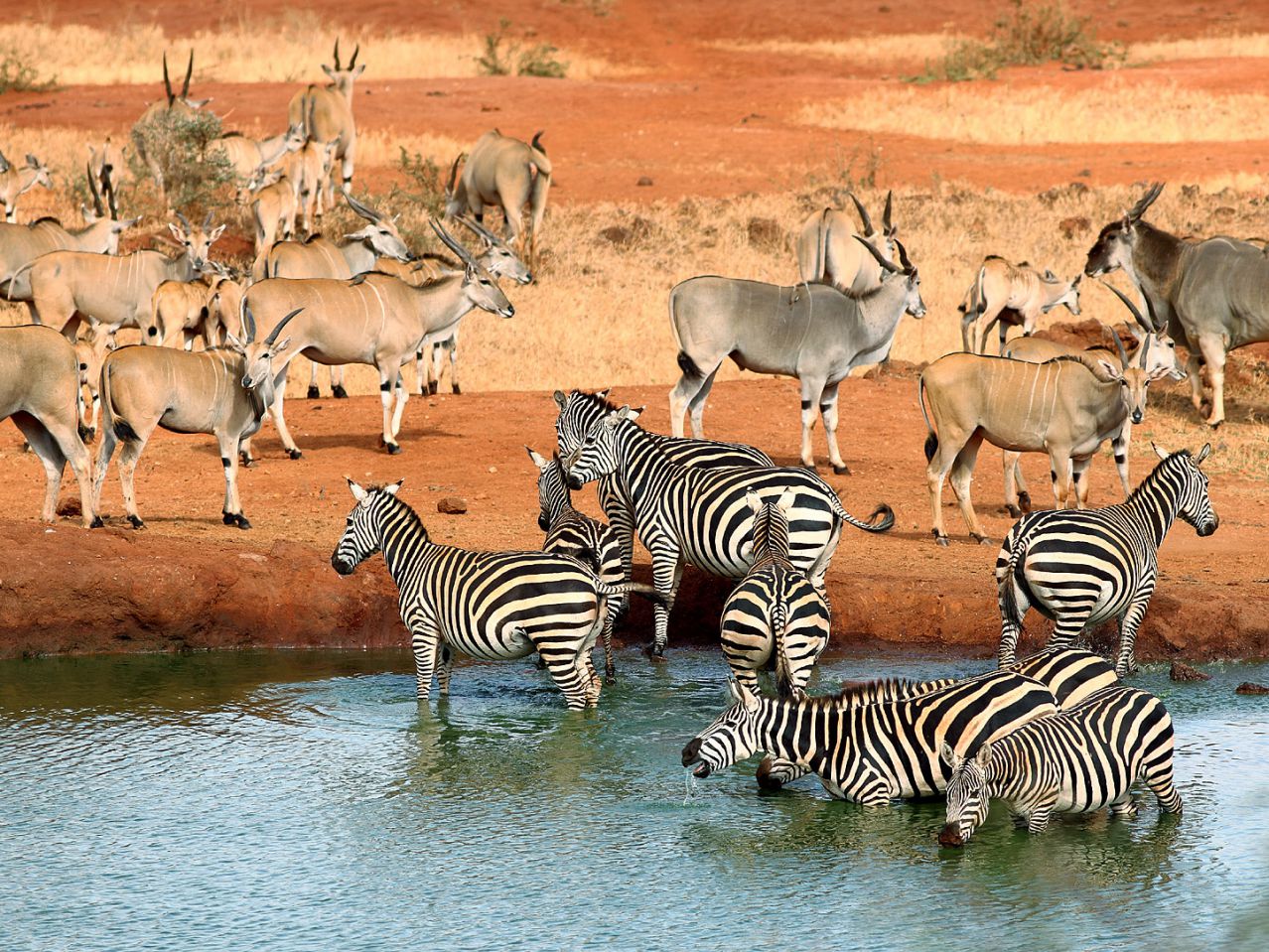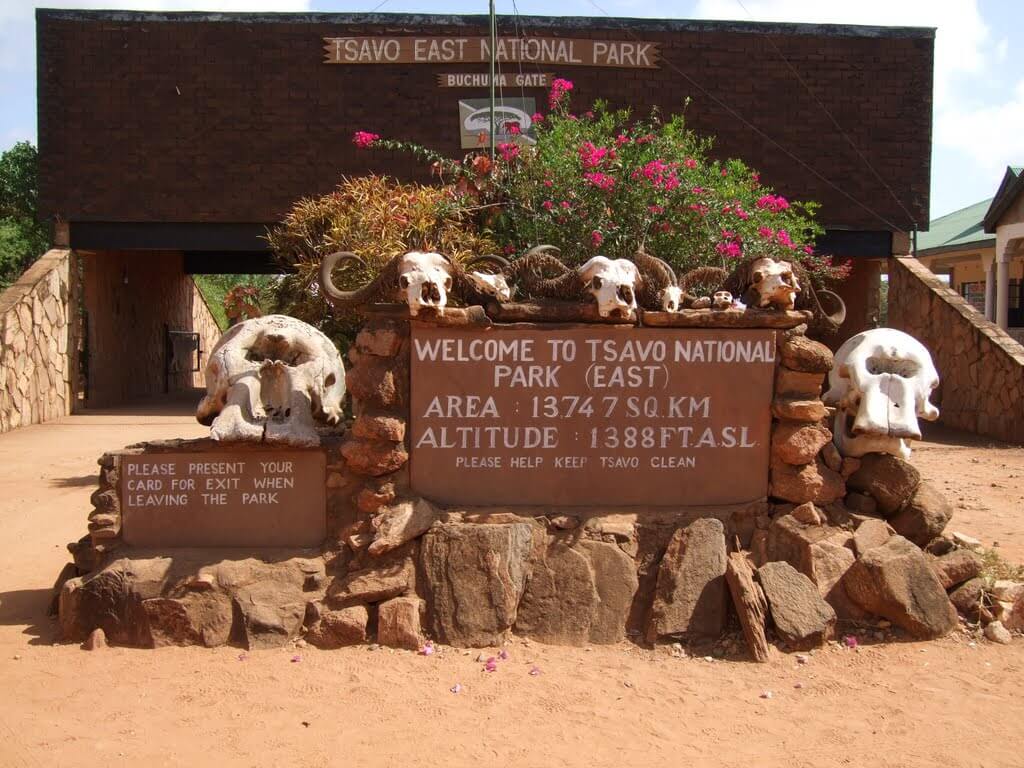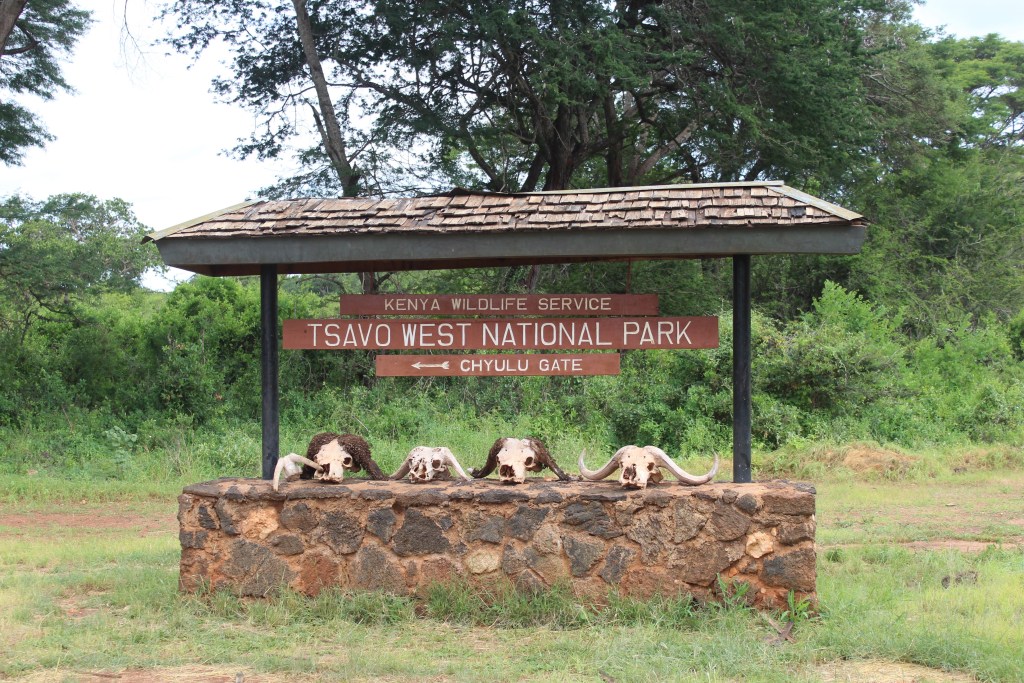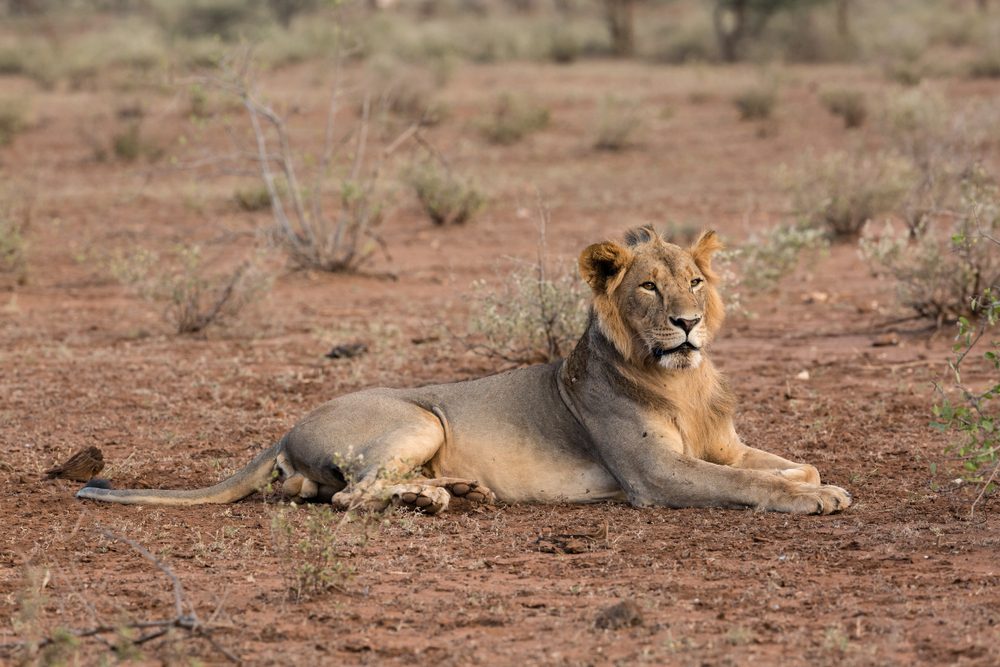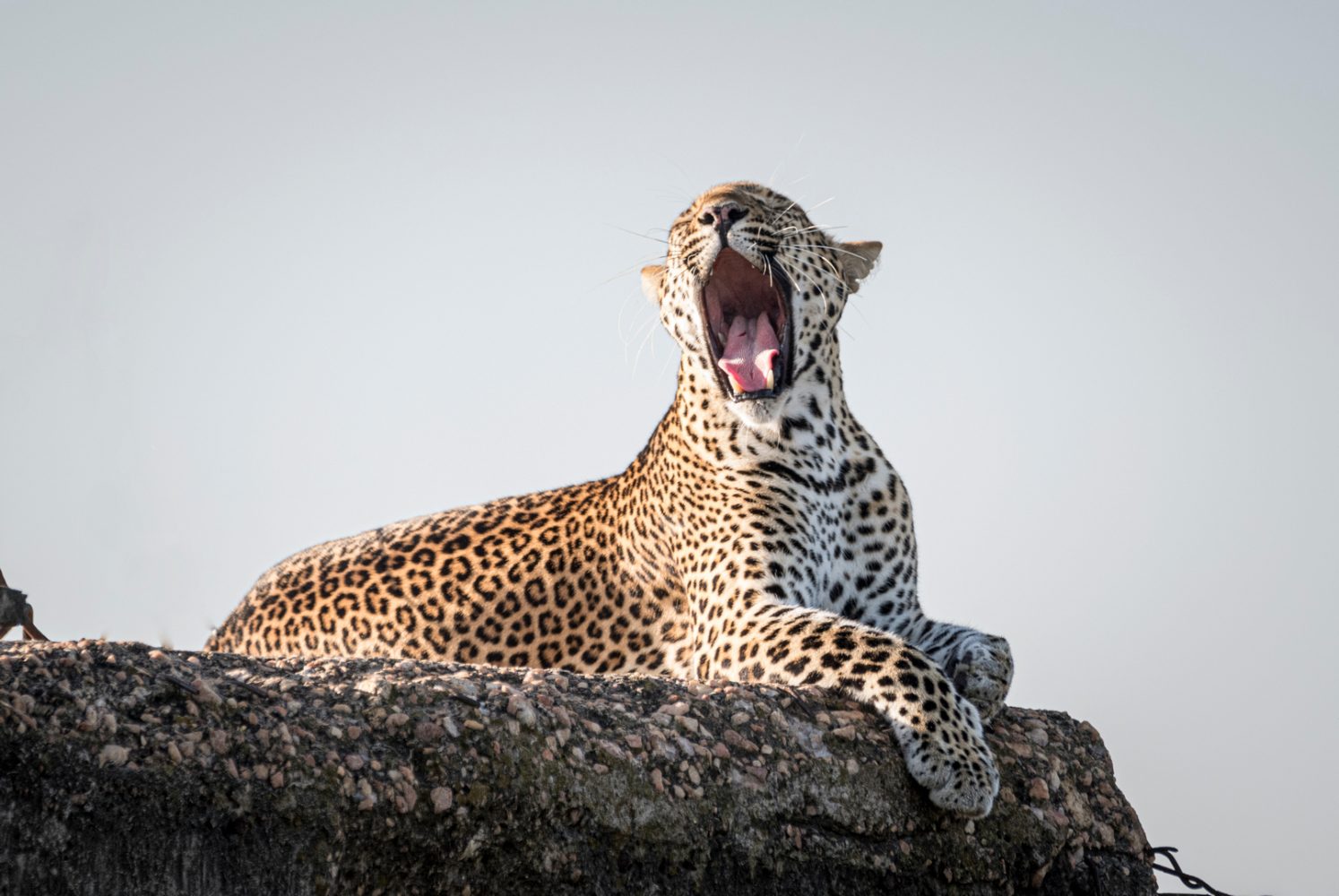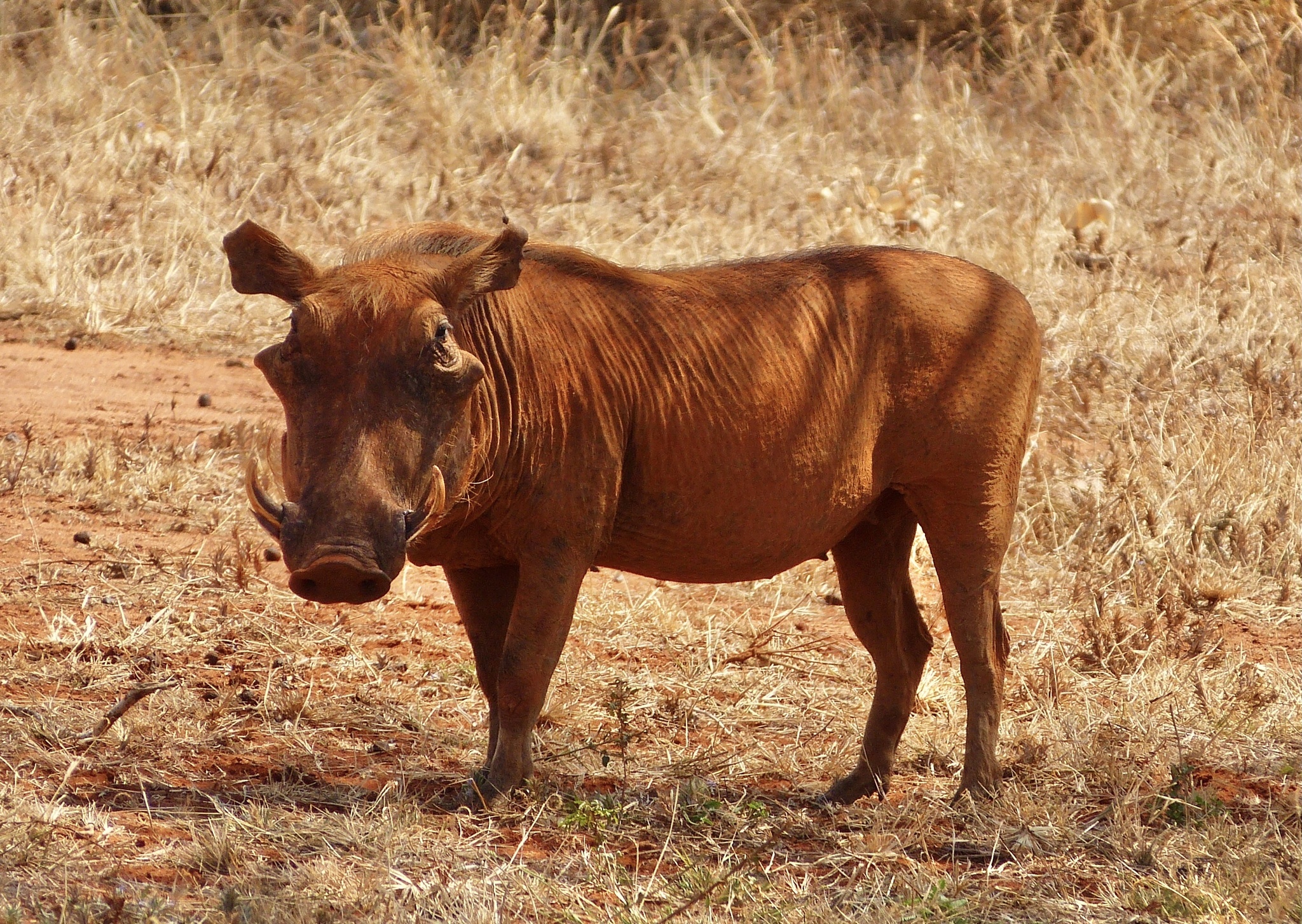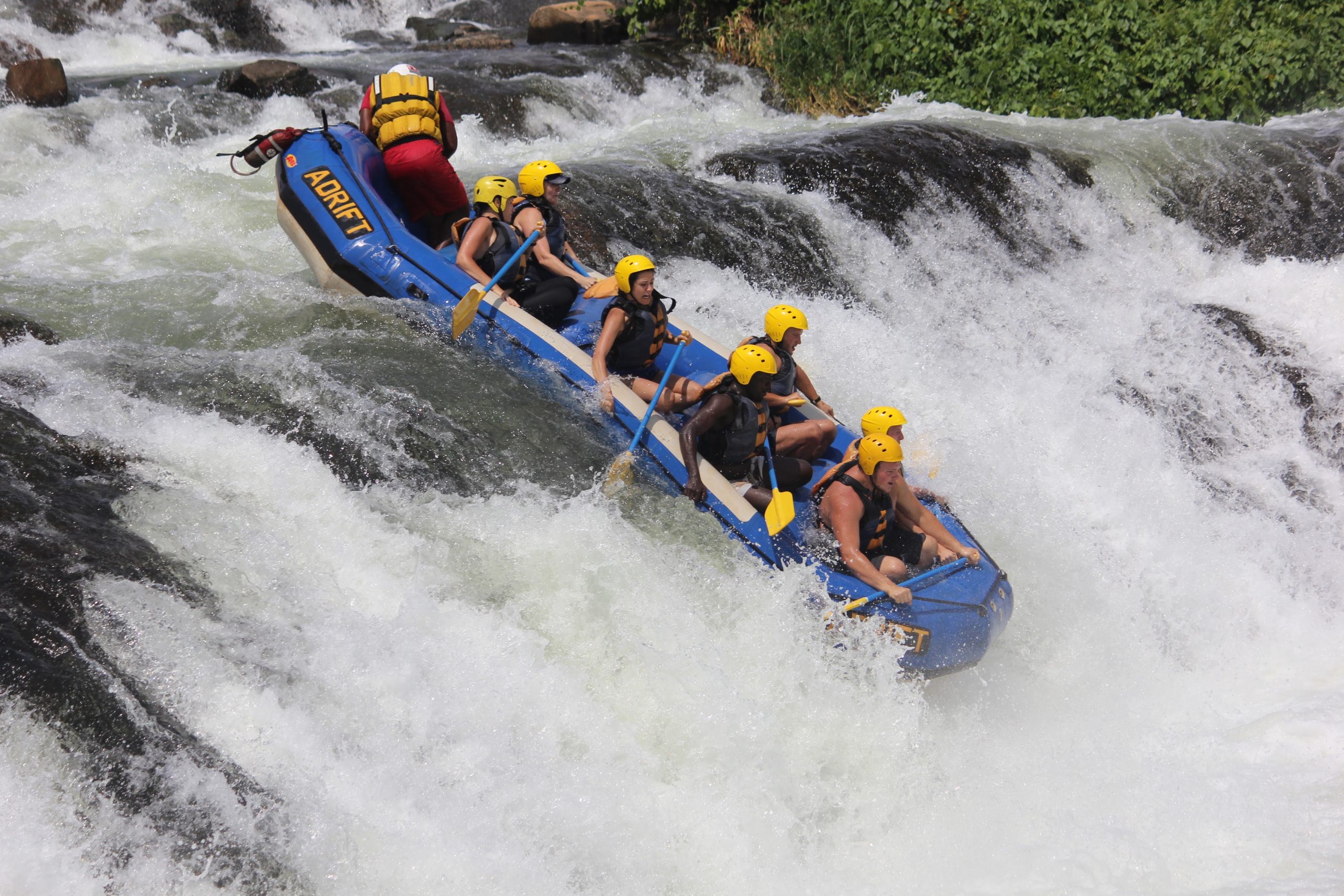Views Of Tsavo National Park
About
location:
East of Mount Kilimanjaro, Southeastern Kenya
The Tsavo National Park, which includes both Tsavo East and Tsavo West, is one of the largest national parks in Africa. It covers over 21,000 square kilometers (8,000 square miles) of diverse landscape, including savannah grasslands, mountain ranges, wooded hills, rivers, waterfalls, and volcanic features.
The park is home to over 500 species of birds, as well as over 60 species of mammals, including lions, leopards, elephants, buffalo, giraffes, and antelope. Tsavo National Park is a truly unique place, with something to offer any wildlife enthusiast.
Let's start with Tsavo East. This section of the park is dominated by semi-arid savannah grasslands, with baobab trees, acacia trees, and evergreen thickets. There are also several rivers that run through the park, making it an important habitat for many wildlife species, including hippos, crocodiles, and over 500 species of birds. Tsavo East is also home to the Tsavo lions, a population of lions known for their unique manelessness.
In addition to the lions, Tsavo East is also home to a wide variety of other animals, including cheetahs, zebras, waterbucks, impalas, and warthogs. There are also a number of rare and endangered species found in the park, including the hirola antelope, African wild dogs, and the black rhino.
Tsavo East is also home to several historical and cultural sites, including the Yatta Plateau, which is the longest lava flow in the world, and the Lugard's Falls, which is a beautiful waterfall on the Galana River.
Tsavo West is a very different landscape than Tsavo East, with more varied terrain and vegetation. The park is home to Mount Kilimanjaro, the world's tallest free-standing mountain, as well as the Ngulia Hills and the Shetani Lava Flow.
Tsavo West is also home to several volcanic features, including hot springs and geysers. The park's vegetation is more lush than in Tsavo East, with riverine forests, acacia forests, and savannah grasslands. Tsavo West is home to an abundance of wildlife, including lions, leopards and elephants.
One of the most popular attractions in Tsavo West is the Mzima Springs, a natural oasis with crystal-clear waters and abundant wildlife. Visitors can take a boat ride to see hippos, crocodiles, and other animals that live in the springs. Another popular attraction is the Ngulia Rhino Sanctuary, which was established to protect the endangered black rhino.
Tsavo West also has a number of historical and cultural sites, including the Kamba Caves, which were used as hideouts by bandits in the early 1900s, and the Lumbwa House, which was once used as a holiday home for British colonial officials. There are also many cultural and historical sites of the local Maasai and Kamba tribes, including villages, gravesites, and ceremonial sites.
Tsavo national park is truly a treasure of kenya, with something for everyone to enjoy.
Things to know before travelling to Tsavo National Park
This article is a tip of the iceberg but will equip you with the "Absolute Need to Knows" for Tsavo National park.
How to get there?
Getting to Tsavo National Park is relatively easy, thanks to the park's location and good infrastructure. There are a few different options for getting to the park:
You can fly into either Mombasa or Nairobi airports, and then take a bus or a taxi to the park. If you're feeling adventurous, you can also drive to the park from either Mombasa or Nairobi. The drive takes around 4-6 hours, and there are many interesting stops along the way.
The drive is scenic, with plenty of opportunities to spot wildlife and take photos.Once you're in the park, you can explore by car or on a guided game drive.
About the weather
The weather in Tsavo National Park is generally warm and dry. The park is located in a semi-arid region, so it doesn't get a lot of rainfall. The hottest months are from December to March, with temperatures ranging from 80 to 100 degrees Fahrenheit (27 to 38 degrees Celsius).
The coolest months are from June to August, with temperatures ranging from 60 to 80 degrees Fahrenheit (16 to 27 degrees Celsius). September and October are the wettest months, with occasional thunderstorms. The park is generally dry and dusty, so it's best to pack appropriate clothing and shoes.
Medical matters that affect your visit.
The following are some common medical concerns for visitors to Tsavo National Park:
Dehydration
The park is very hot and dry, so it's important to drink plenty of water. Bring a refillable water bottle and drink at least two liters of water per day.
Heat exhaustion
It's important to take breaks from the sun and avoid strenuous activity during the hottest hours of the day. If you start to feel dizzy, nauseous, or lightheaded, find a cool place to rest and drink plenty of water.
Insect bites
Mosquitoes and other insects can carry diseases, so it's important to take precautions to avoid bites. Wear light-colored, long-sleeved clothing and apply insect repellent.
Sunburn
The sun is very strong in Tsavo National Park, so it's important to wear sunscreen and a hat, and to avoid prolonged exposure to the sun.
Food-borne illnesses
It's important to eat only food that has been cooked or boiled, and to wash your hands before eating. Avoid raw fruits and vegetables that have not been washed or peeled.
Malaria
Malaria is a risk in Tsavo National Park, so it's important to take anti-malarial medication, use insect repellent, and sleep under a mosquito net.
Altitude Sickness
The park's elevation is around 4,000 feet (1,200 meters), so altitude sickness can be a concern for some visitors. Symptoms include headache, nausea, and shortness of breath. If you experience any of these symptoms, rest, drink plenty of water, and avoid strenuous activity.
Accidents
It's important to exercise caution when exploring the park, as there are cliffs, animals, and other hazards. Be sure to stay on the designated paths and follow the rules of the park. If you are injured, seek medical attention immediately.
These are some of the most common medical concerns for visitors to Tsavo National Park. If you have any pre-existing medical conditions, be sure to consult with your doctor before your trip.
It's also a good idea to travel with a first-aid kit and bring a supply of any prescription medications you may need. It's always best to err on the side of caution and be prepared for any eventuality.
About the locals
The people living near Tsavo National Park come from a variety of different ethnic groups, including the Maasai, Kamba, Taita, and Pokomo. Each of these groups has its own unique culture and traditions. The Maasai are known for their brightly colored clothing, intricate beadwork, and traditional pastoralist lifestyle.
The Kamba are skilled farmers and traders, and are known for their basketry and pottery. The Taita are known for their woodcarving and ironworking, and the Pokomo are famous for their fishing and rice farming. If you have the opportunity, be sure to chat with the locals and learn more about their culture.
If you're interested in visiting a local village, be sure to ask permission first, and be respectful of the community's customs. The people of Tsavo National Park are incredibly proud of their culture and traditions, and they are always happy to share them with visitors.
Learning about the local people is a great way to make your visit to the park even more meaningful.
The Park entrance
Tsavo National Park has two entrances - Tsavo West and Tsavo East. The main gate for Tsavo West is located in the town of Mtito Andei, and the main gate for Tsavo East is located in Voi.
Both entrances have a small visitor center, where you can purchase park entrance tickets, get information about the park, and book accommodation. It's important to note that Tsavo National Park is a very large park, and it can take several hours to travel between the two entrances.
Be sure to plan your trip accordingly and give yourself plenty of time to explore.
Language and communication at Tsavo National Park
The language and communication in Tsavo National Park is diverse, reflecting the varied history and culture of the region. The main languages spoken in the park are Swahili and English, but there are also many other languages spoken by the diverse communities who live in and around the park.
The Maasai people, who live in the area, have their own unique language, known as Maa. Additionally, there are also several smaller ethnic groups in the area, each with their own unique language and culture. As a result, communication in the park can be complex and varied.
However, most people are able to communicate in at least one of the major languages spoken in the region. This allows for a relatively high level of communication between different groups, despite the diverse range of languages spoken.
However, language barriers can still exist, and it is important to be aware of the cultural and linguistic diversity when communicating in Tsavo National Park.
Safety at Tsavo National Park
Safety in Tsavo National Park is generally good, although there are a few things to be aware of. The biggest risk to visitors is wildlife. The park is home to many large animals, including lions, elephants, and rhinos.
It is important to stay in your vehicle while driving through the park, and to be aware of the animals around you. If you are camping, it is important to be aware of the risk of wildlife entering the campsite, and to take appropriate precautions.
Additionally, there have been reports of bandits operating in the area around the park, so it is important to take care when traveling in the region.
Vital information on money matters
When it comes to money matters at Tsavo National Park, it's important to know that most facilities inside the park operate on a cash-only basis. There are no ATMs inside the park, so it's important to bring enough cash with you to cover the cost of your stay and any additional expenses.
Most facilities, including hotels, lodges, and campsites, accept US dollars, but Kenyan shillings are also accepted. Additionally, it's a good idea to bring small denominations of cash, as many businesses may not have change for large bills.
It's also worth noting that most businesses at Tsavo National Park do not accept credit cards. If you need to get cash while you're in the park, there are banks in the nearby towns of Voi and Mombasa. Voi is also home to the nearest ATM.
It's also good to know that most businesses do not accept travelers' checks. Finally, it's always a good idea to carry your cash in a secure place, such as a money belt or a hidden pocket, to avoid theft.
Fun things to do at Tsavo National Park
These are just a few of the fun things to do at Tsavo National Park. Whether you're looking for adventure or relaxation, there's something for everyone to enjoy! Here are a few ideas:
Take a safari drive
This is the best way to see the wildlife, and you can do it on your own or with a guide.
Visit the Mzima Springs
These clear springs are a beautiful place to take a dip and see hippos and crocodiles up close.
Go bird watching
Tsavo National Park is home to over 500 species of birds, including many rare and endangered species.
Take a hike
There are plenty of hiking trails in the park, with breathtaking views.
Visit the Shetani Lava Flow
This unique geological feature is a great place to explore and take photos.
Go on a night safari
You can take a special night safari to see nocturnal animals like leopards, hyenas, and bush babies.
Take a cultural tour
There are many opportunities to learn about the local culture, including traditional dance performances and village tours.
Relax at the beach
The Kenyan coast is not far from Tsavo National Park, and it's the perfect place to relax after a busy day of exploring.
There are so many things to do at Tsavo National Park, and this is just a small selection. The best way to discover the park is to explore it on your own and find your own favorite spots.
Who can travel to Tsavo National Park?
Tsavo National Park is open to visitors from all over the world. However, there are a few things to keep in mind:
Firstly, Visitors must have a valid passport and a visa to enter Kenya. Visitors must also have a valid Kenyan visa to visit the park.Visitors are required to pay a park entry fee before entry and children under the age of 16 must be accompanied by an adult.
Secondly, it's important to know that some areas of the park are only accessible with a 4WD vehicle so it's better to plan accordingly. The park is located in a malaria zone, so visitors should take appropriate precautions by taking anti-malaria medication, wearing long sleeved clothing and using insect repellent to wade off mosquitoes. Lastly, do not bring your pets as they are not allowed in the park.
These are just some of the rules and regulations that visitors to Tsavo National Park should be aware of. In addition, it's important to follow all park rules and regulations while visiting, and to treat the park and its wildlife with respect. This will ensure that your visit is both enjoyable and safe.
Travel Documents
You will need a valid passport and visa to enter Kenya. Make sure your passport is valid for at least six months after your travel date and check if you need to obtain a visa before traveling.
What time of the year is best to visit?
The best time to visit Tsavo National Park depends on your interests and preferences. Generally, the dry season (June-September and December-March) is the best time to visit, as the weather is pleasant and the wildlife is easier to spot.
However, the wet season (April-May and October-November) has its own advantages, with lush landscapes and abundant birdlife. The choice of when to visit really depends on what you hope to see and do in the park.
Packing essentials for your trip
Here are some essential items to pack for your trip to Tsavo National Park:
Comfortable clothing and shoes
It's important to dress for the weather and for comfort when exploring the park. Lightweight, breathable fabrics are best.
Sun protection
A hat, sunglasses, and sunscreen are essential for protecting yourself from the sun.
Insect repellent
A good insect repellent is important for preventing bites from mosquitoes and other insects.
Water bottle
It's important to stay hydrated while exploring the park, so bring a refillable water bottle.
Binoculars
Binoculars are a great way to get a closer look at the wildlife.
Camera
Tsavo National Park is a photographer's paradise, so be sure to bring your camera.
Basic first aid kit
A first aid kit is always a good idea, just in case of any minor injuries.
Mosquito net
If you're planning on camping or staying in accommodations without air conditioning, a mosquito net can be a lifesaver.
A copy of your travel documents
It's always a good idea to have a copy of your passport, visa, and other important documents with you, just in case.
Also, remember to pack light to make your travels easier and more enjoyable.
view map
Book Flight ticket
If this widget is not showing try reloading the page
The flight search result will be provided in a new tab
Mombasa international airport will be a good destination if you are coming from outside Kenya
Book Hotel
If this widget is not showing try reloading the page
The hotel search result will be provided in a new tab
Input Tsavo, Kenya, Voi, Kenya, Mombasa, Kenya as the city name to search and compare hotel prices
You can book tours at hotels upon arrival.
